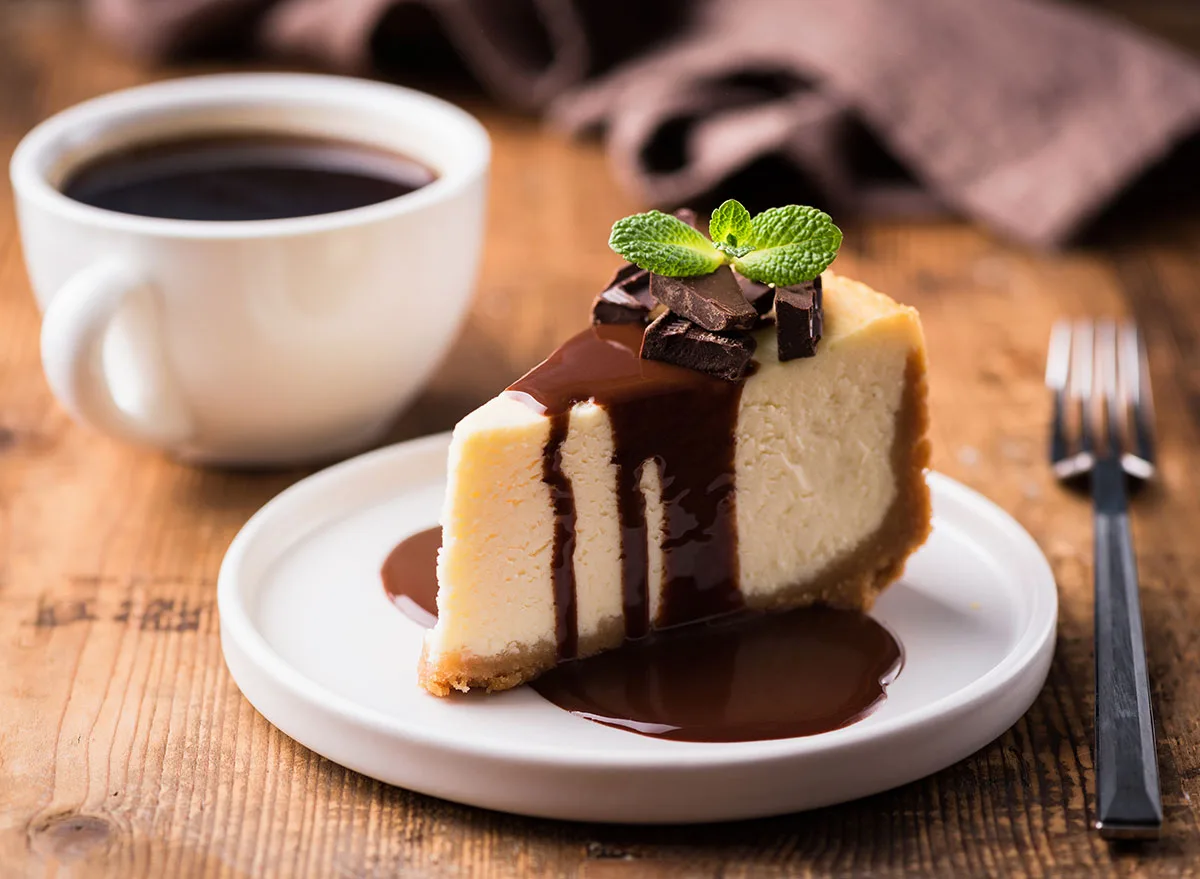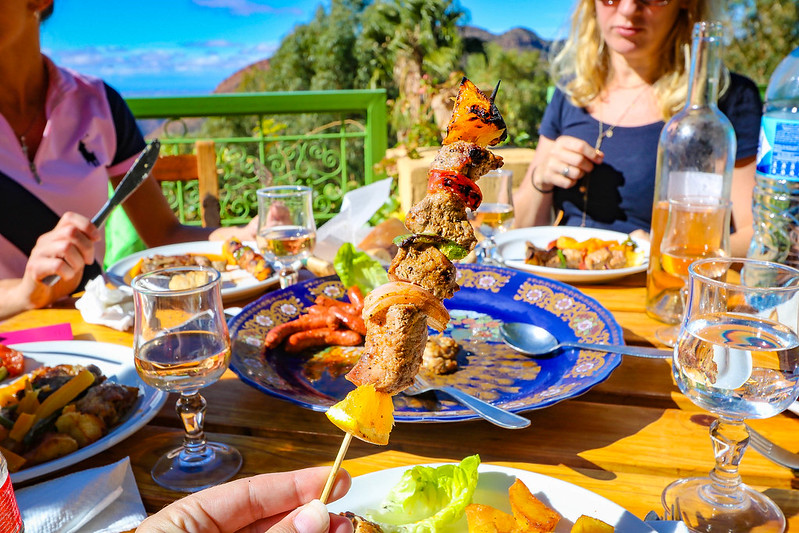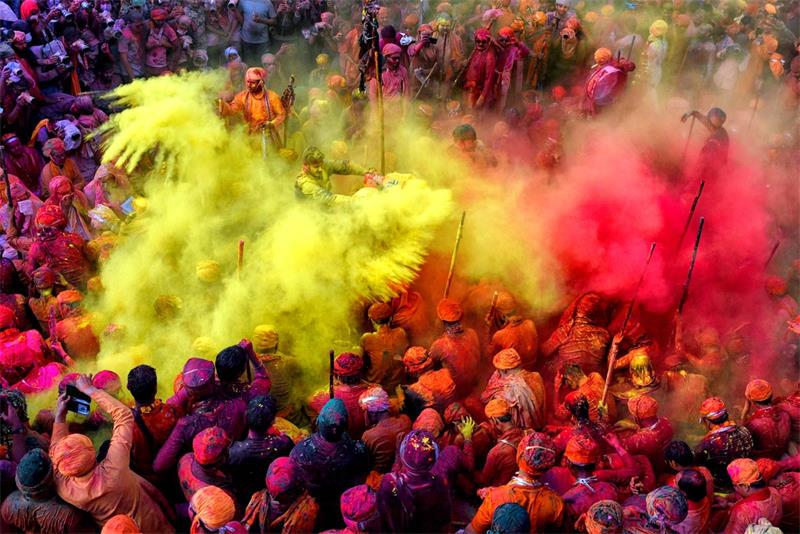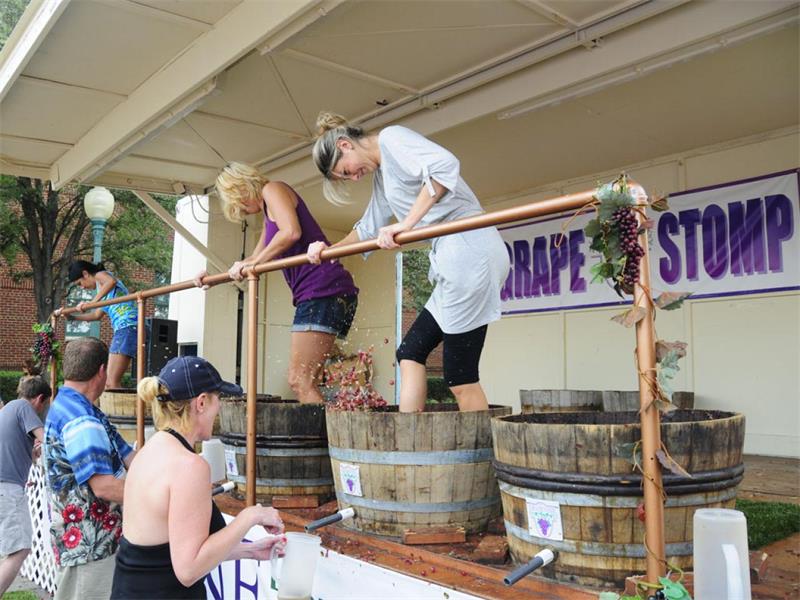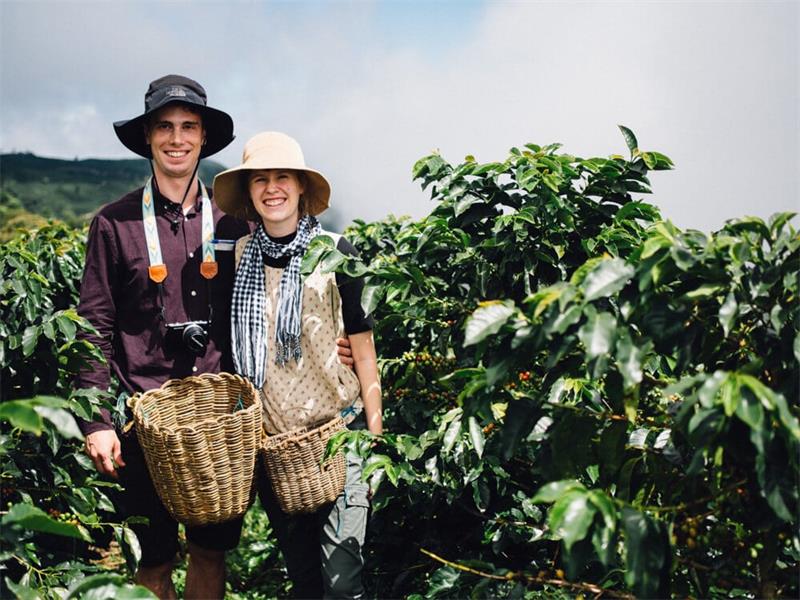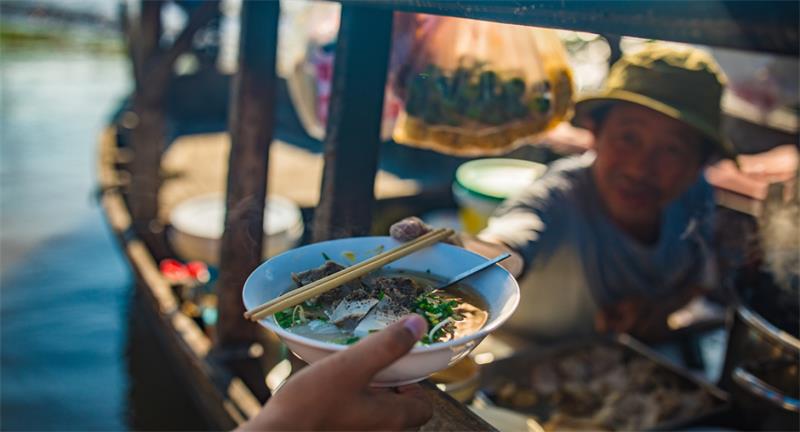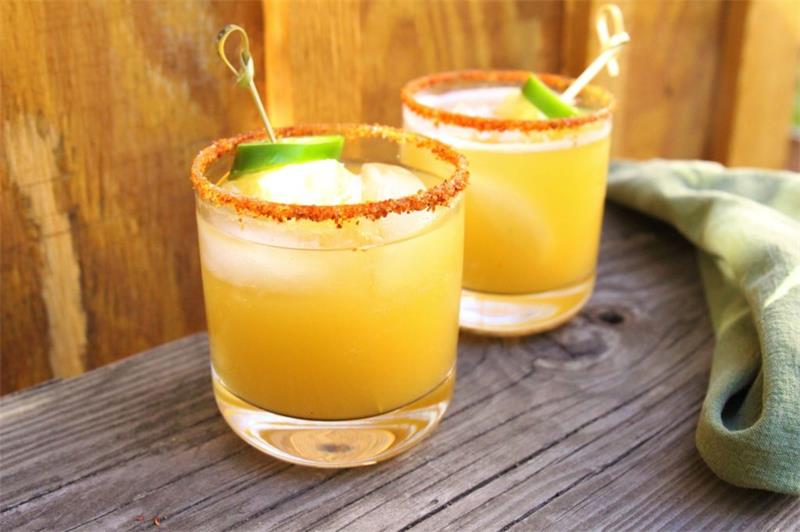Contents
- 1 Indulge in the Sweet Delights of World Cuisine
- 2 Decadent Tiramisu from Italy
- 3 Baklava from Turkey
- 4 The History and Cultural Significance of Mochi
- 5 Ingredients and Preparation Methods
- 6 Popular Flavors and Varieties
- 7 The Sweet History of Brigadeiro
- 8 Traditional Ingredients and Preparation Methods
- 9 Variations on Traditional Brigadeiro
- 10 The Sweet Story of Pavlova
- 11 The Perfect Pavlova Recipe
- 12 Regional Variations on Pavlova
- 13 Churros from Spain/Mexico
- 14 Kheer: A Sweet and Sacred Dessert
Indulge in the Sweet Delights of World Cuisine
There’s nothing quite like sinking your teeth into a delicious dessert after a meal. Whether it’s a simple bowl of fresh fruit or an intricately crafted pastry, dessert is enjoyed all around the world. From Italian tiramisu to Brazilian brigadeiro, desserts come in all shapes and sizes, and each culture has its own unique take on dessert.
The Universal Love for Desserts
Desserts are enjoyed across the globe without discrimination. Rich or poor, old or young, everyone loves desserts.
They serve as a reward for finishing a meal or can be eaten alone as a treat; they can be enjoyed at any time of day or night. No matter where you go in the world, you’ll find people indulging in their favorite sweet treats with enthusiasm and happiness.
Desserts as Cultural Signifiers
While desserts may seem like just another aspect of food culture, they’re actually much more than that. In many cultures, the desserts are an integral part of important occasions such as weddings and holidays. They also have significant cultural meanings that have been passed down through generations.
In Italy, for example, tiramisu is often served at special events because it represents luck and prosperity. In Brazil, brigadeiro is associated with celebrations because it was created during World War II to help lift spirits during hard times.
Understanding these cultural meanings behind desserts allows us to appreciate them even more. In the coming sections we will explore some amazing desserts from around the world – their origin stories and how they are prepared in different parts of globe.
Decadent Tiramisu from Italy
Italy is home to many famous desserts, but none are as beloved as tiramisu. This creamy, coffee-flavored dessert has been satisfying sweet cravings for generations.
The history of tiramisu is somewhat debated, but most agree that it originated in the Veneto region in northern Italy. Some stories suggest that it was created as a pick-me-up for workers, while others believe it was served at local brothels to give clients energy before partaking in their activities.
The traditional recipe for tiramisu includes ladyfingers soaked in espresso and layered with a mixture of mascarpone cheese, eggs, sugar, and sometimes liquor like marsala or amaretto. Cocoa powder is sprinkled on top for an extra touch of flavor.
However, there are many variations on this classic recipe that offer unique twists on the original. One popular variation on traditional tiramisu is called “Strawberry Tiramisu”, which uses fresh strawberries instead of cocoa powder and adds a fruity flavor to the mix.
Another variation is “Chocolate Tiramisu”, which incorporates chocolate into the filling and topping instead of cocoa powder. These variations on classic tiramisu show how versatile this dessert can be while still retaining its signature flavor profile.
If you’re looking for a decadent dessert with a rich history and plenty of variations to explore, look no further than tiramisu from Italy. Whether you enjoy the classic recipe or one of its many variations, this dessert is sure to satisfy your sweet tooth and leave you wanting more.
Baklava from Turkey
A Sweet and Nutty Delight
Baklava is a sweet pastry that has been enjoyed throughout the Middle East for centuries. Its cultural significance is rooted in the Ottoman Empire, where it was traditionally served during special occasions such as weddings and religious celebrations.
Today, baklava continues to be a popular dessert throughout the world, especially in Turkey. The traditional ingredients of baklava include phyllo dough, butter, sugar syrup and nuts.
However, the type of nuts used can vary depending on regional preferences. In Turkey, pistachios are commonly used while other countries favor almonds or walnuts.
The phyllo dough is rolled thin and layered with butter before being filled with a mixture of finely chopped nuts mixed with sugar and spices such as cinnamon or cardamom. The preparation of baklava is intricate and time-consuming requiring skillful hands.
The layers of phyllo must be precisely laid out to create an even texture and shape while also preventing air pockets from forming within the finished product. After baking in a hot oven until golden brown, it is doused generously with syrup made from sugar and water to make it moist enough to melt in your mouth.
Regional Variations on Baklava
While baklava’s basic recipe remains consistent across different regions, its cultural significance varies considerably depending on where you go. For example, Turkish baklavas tend to have less honey or syrup compared to Greek versions which tend to be much sweeter due to their use of honey instead of sugar in the syrup.
There are also variations based on filling ingredients used such as apricots or dates instead of standard nuts found typically within this dessert’s traditional recipe. Some regions may add other flavors like rosewater or orange blossom water into their recipes which give unique taste profiles not found elsewhere.
In Turkey, baklava is often served with Turkish tea or coffee which compliments it nicely. However, in other parts of the world it may be served with Greek yogurt or ice cream which balances out the sweetness and makes it a delightful treat for any occasion.
The History and Cultural Significance of Mochi
Mochi is a traditional Japanese dessert that has been enjoyed for centuries. Its origins can be traced back to ancient Japan when it was used as an offering to the gods during religious ceremonies.
Today, mochi is a popular treat enjoyed throughout Japan and around the world. It is typically made by pounding steamed glutinous rice into a paste and shaping it into small, bite-sized balls or squares.
The cultural significance of mochi goes beyond its use in religious ceremonies. In Japan, it is also associated with the New Year’s celebration, where it is eaten as part of a special meal called osechi ryori.
Mochi represents strength and resilience in Japanese culture, symbolizing the ability to overcome obstacles and challenges. It is also considered a symbol of good luck and prosperity.
Ingredients and Preparation Methods
Mochi is made primarily from glutinous rice flour, which gives it its chewy texture. Other ingredients may include sugar, water, soybean flour, or matcha powder for flavoring. The preparation process involves steaming the rice flour mixture until it becomes soft and pliable enough to form into balls or squares.
One popular type of mochi is daifuku mochi, which consists of sweetened red bean paste wrapped in a layer of mochi dough. Another popular variation is sakura mochi, which features pickled cherry blossoms wrapped in pink-colored mochi dough.
Popular Flavors and Varieties
In addition to traditional flavors like red bean paste and matcha green tea powder, there are many creative variations on mochi available today. Some modern twists on this classic dessert include chocolate-filled mochi balls drizzled with caramel sauce or stuffed with fresh fruit like strawberries or mangoes. Another trendy variety that has become popular in recent years is ice cream mochi, which features a small ball of ice cream encased in a layer of mochi dough.
This delicious frozen treat comes in a variety of flavors like vanilla, chocolate, and green tea. Whether you prefer the traditional flavors or enjoy trying new and creative variations, there’s no denying the appeal of this chewy, sweet Japanese dessert.
The Sweet History of Brigadeiro
Brigadeiros are one of the most famous desserts in Brazil, and they have a fascinating origin story. The dessert was named after Brigadeiro Eduardo Gomes, who was a Brazilian Air Force Officer and politician.
During his presidential campaign in the 1940s, his supporters created a new type of sweet that they named “brigadeiro” to honor him. The original recipe for brigadeiros consisted of just condensed milk, cocoa powder, butter, and chocolate sprinkles.
It quickly became popular at political events and soon became a cornerstone of Brazilian cuisine. Now you can find brigadeiros at almost every birthday party or celebration across Brazil!
Traditional Ingredients and Preparation Methods
Making brigadeiros is relatively simple compared to other desserts. You’ll need sweetened condensed milk, unsweetened cocoa powder, unsalted butter, and chocolate sprinkles.
To start making the treat you combine all the ingredients over low heat while constantly stirring. Once everything is combined it should create a dough-like consistency that can be rolled into balls about the size of a cherry tomato.
The next step is to roll them into chocolate sprinkles until they are fully coated on all sides. Afterwards put them in small cupcake liners which will help keep their round shape.
Variations on Traditional Brigadeiro
While traditional brigadeiros consist only of basic ingredients there are many ways to mix up your recipe! For example adding nuts or grated coconut can add texture while also keeping with the Brazilian theme.
Chocolate is still king but some people like using white or dark chocolate instead! Also adding liqueurs such as Baileys Irish Cream can add depth to your dessert without making it too boozy!
In addition to these variations you can try different toppings such as shredded coconut or even dipping them into different types of melted chocolate! The possibilities for making creative Brigadeiros are endless!
The Sweet Story of Pavlova
Pavlova is a light and airy meringue-based dessert that is believed to have originated in either New Zealand or Australia in the 1920s. This dessert has a crisp outer shell and a soft, marshmallow-like center. It is typically topped with whipped cream and fresh fruits such as kiwi, strawberries, passion fruit, or peaches.
The origin of the pavlova is somewhat disputed between New Zealand and Australia. However, both countries claim it as their own national dessert.
The most popular story behind the creation of pavlova is that it was made in honour of Russian ballerina Anna Pavlova during her tour through Australia and New Zealand in the 1920s. Regardless of its origins, pavlova has become an iconic dessert in both countries.
The Perfect Pavlova Recipe
The ingredients for pavlova are simple: egg whites, sugar, vinegar or lemon juice, cornstarch, salt and vanilla extract. The trick to making the perfect pavlova lies in getting the meringue just right – it should be crisp on the outside but soft and fluffy on the inside.
To make pavlova, start by preheating your oven to 180°C (350°F). Beat six egg whites with a pinch of salt until stiff peaks form.
Gradually add one cup of caster sugar while continuing to beat until the mixture becomes thick and glossy. Next add one teaspoon each of white vinegar or lemon juice and cornstarch along with one teaspoon vanilla extract to stabilize your meringue mixture.
Shape your mixture into a large circle using a spatula then create a well in its center for holding toppings after baking without flattening it too much. Bake for about an hour then allow cooling before topping with whipped cream and fruits.
Regional Variations on Pavlova
Pavlova is a dessert that has evolved over the years with many regional variations. In Australia, pavlova is traditionally topped with passionfruit and kiwi fruit, while in New Zealand it is more commonly topped with strawberries and whipped cream.
Some people like to add toppings such as mangoes, raspberries, blueberries or peaches. Others advocate for adding crushed meringue to the whipped cream for an extra crunch.
In recent years, pavlova has become increasingly popular as a wedding cake alternative in both New Zealand and Australia. It’s easy to see why – it’s light, delicious and makes an impressive centerpiece for any special occasion.
Churros from Spain/Mexico
History and Cultural Significance of Churros
If you’ve ever visited Mexico or Spain, you may have come across some churro stands in the streets. And if you haven’t tried them yet, I highly recommend that you do!
The churro is a golden, crispy snack that’s perfect for an early morning breakfast or late-night dessert. This delicious delight has a long history that dates back to the Spanish shepherds who roamed the hills during the 16th century.
Back then, shepherds spent months in remote areas without access to fresh food. They needed a snack that was easy to make and could last for days without spoiling.
The churro was thus born! It was a simple fried dough pastry made with flour, water, and salt.
Today, churros are enjoyed by people all over the world – especially in Spain and Mexico where they hold great cultural significance. You can find churrerías (churro shops) on almost every corner of Madrid or Barcelona, where locals enjoy them with hot chocolate or cafe con leche.
Ingredients and Preparation Methods
The traditional ingredients for making churros include flour, water, salt, and oil for frying. Once these ingredients are mixed together to form a dough-like consistency, it is put into a pastry bag with a star-shaped nozzle at one end.
Then comes the fun part – shaping your churros! You can shape them into long strips or swirls for an extra touch of creativity.
Once they’re done shaping, they’re dropped in hot oil until golden brown all around. comes the best part – adding toppings!
Traditionally served plain with just sugar dusting on top. But other popular toppings include cinnamon sugar mixtures or dulce de leche.
Popular Dipping Sauces for Churros
While churros are delicious on their own, you can also pair them with different dipping sauces to add an extra kick of flavor. The most popular dipping sauces for churros include hot chocolate sauce, caramel sauce, and vanilla bean cream. In Spain, the churro is typically eaten with a thick and rich hot chocolate to dip it in.
While in Mexico, it’s popular to dip them in a warm caramel sauce or creamy vanilla bean cream. Overall, the versatility of the churro makes it easy to customize and enjoy no matter where you are!
Kheer: A Sweet and Sacred Dessert
History and Cultural Significance of Kheer
Kheer is a timeless dessert that has been enjoyed for centuries in India, Pakistan, Bangladesh, and other parts of South Asia. It is a sweet pudding made with rice, milk, sugar, and various spices.
Kheer holds a special place in the cultural celebrations of the region. It is often served during religious festivals or special occasions such as weddings.
In Hinduism, kheer has been used as an offering to the gods for centuries. It is considered one of the favorite foods of Lord Krishna.
In fact, it is said that Lord Krishna himself appeared in his devotee’s dream to reveal the recipe for kheer made with vermicelli instead of rice. This version is known as seviyan kheer and it’s usually prepared on Eid al-Fitr, an Islamic holiday celebrated by Muslims worldwide.
Ingredients and Spices Used in Kheer
The basic ingredients used in kheer are rice (or vermicelli), milk, sugar, cardamom pods or powder, saffron strands (optional), and nuts such as almonds or pistachios. The rice needs to be cooked until soft before adding it to the milk mixture otherwise it will not thicken properly. Cardamom pods are added because they give kheer its signature flavor and aroma.
Saffron strands provide a beautiful golden color and add depth to the flavor profile of this dessert. Many families have their own unique spin on this classic dessert by adding fruits such as mangoes or bananas or even using coconut milk instead of dairy milk.
Conclusion
Kheer may seem like just another pudding dessert at first glance but once you learn its history and cultural significance you’ll begin to appreciate it on a whole new level. It’s not just a dessert – it’s a part of the fabric of South Asian culture. So, next time you have a chance to indulge in kheer, take a moment to savor its rich history and importance in the region.

